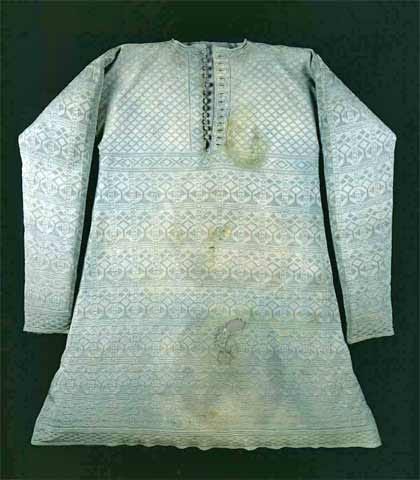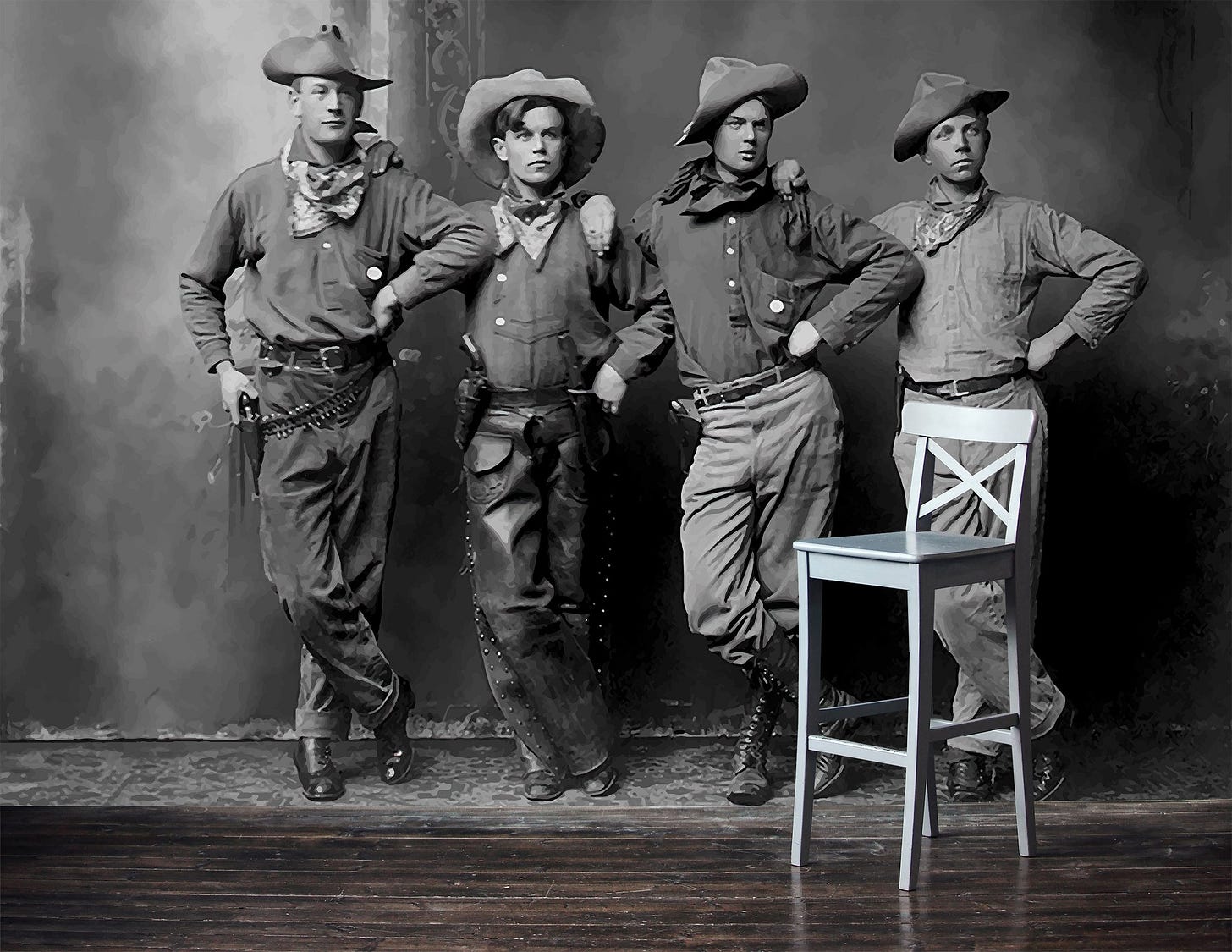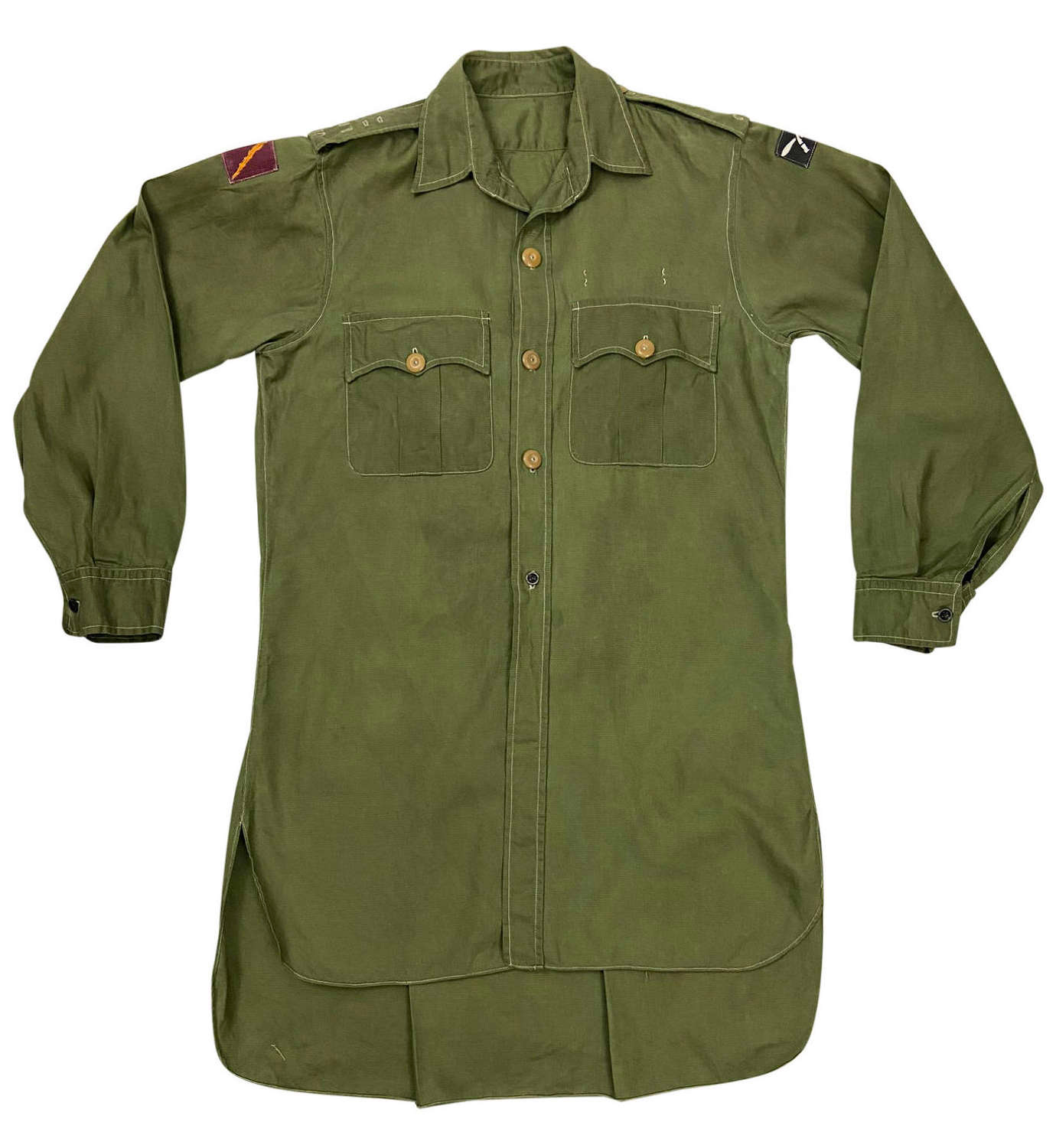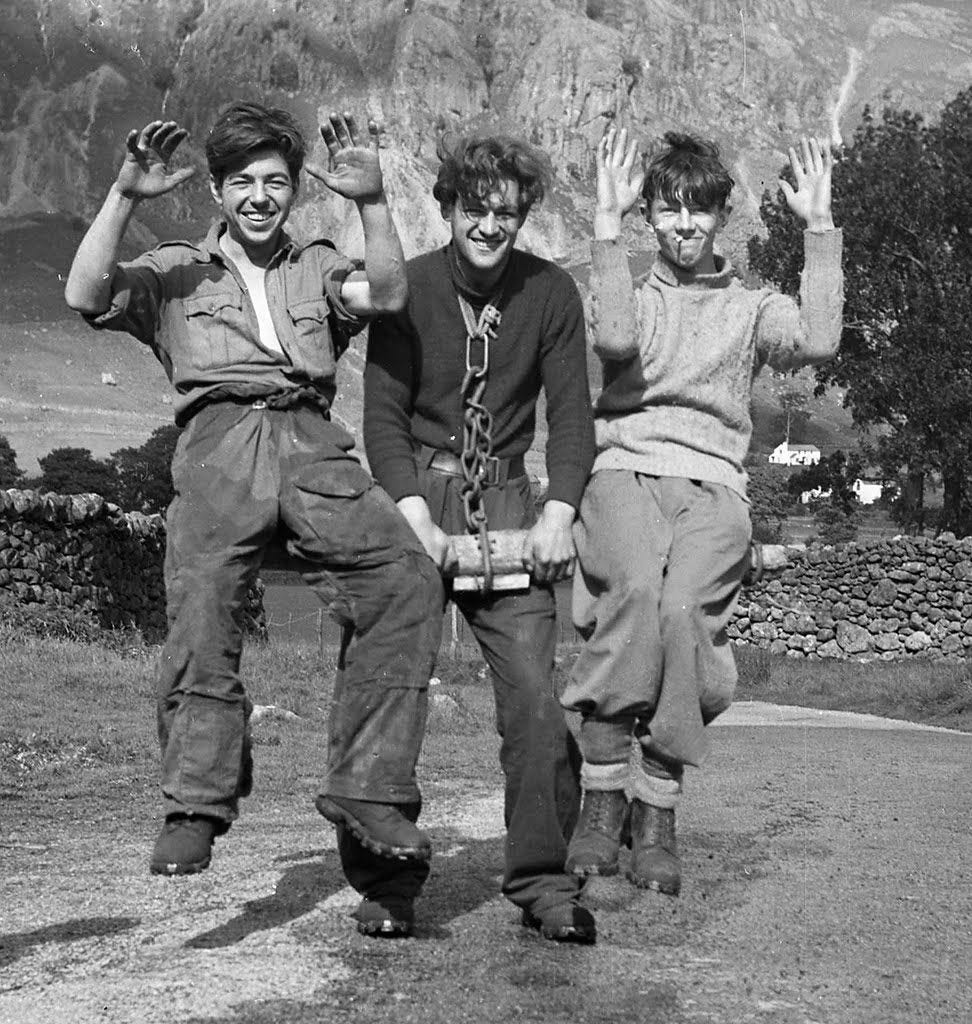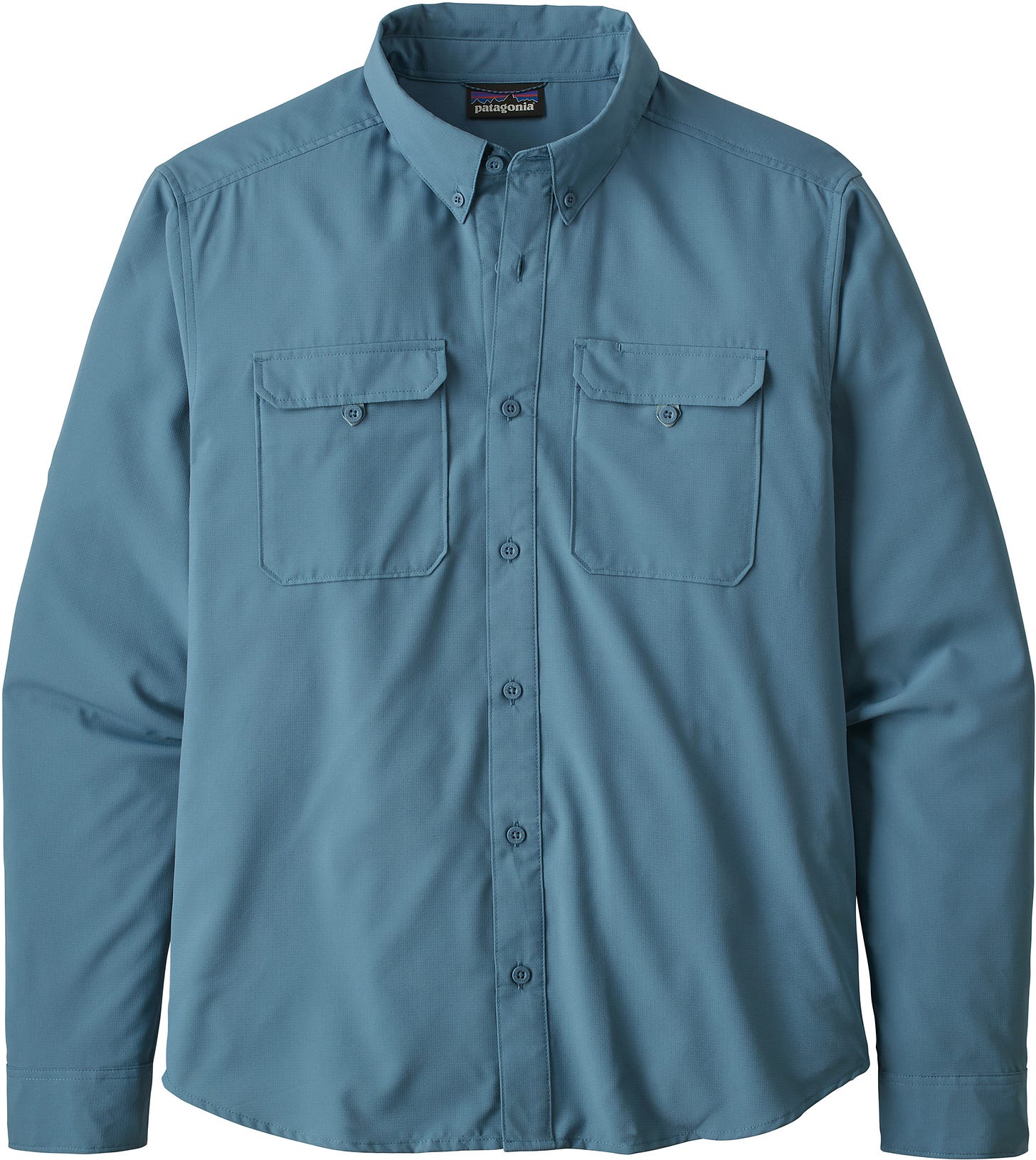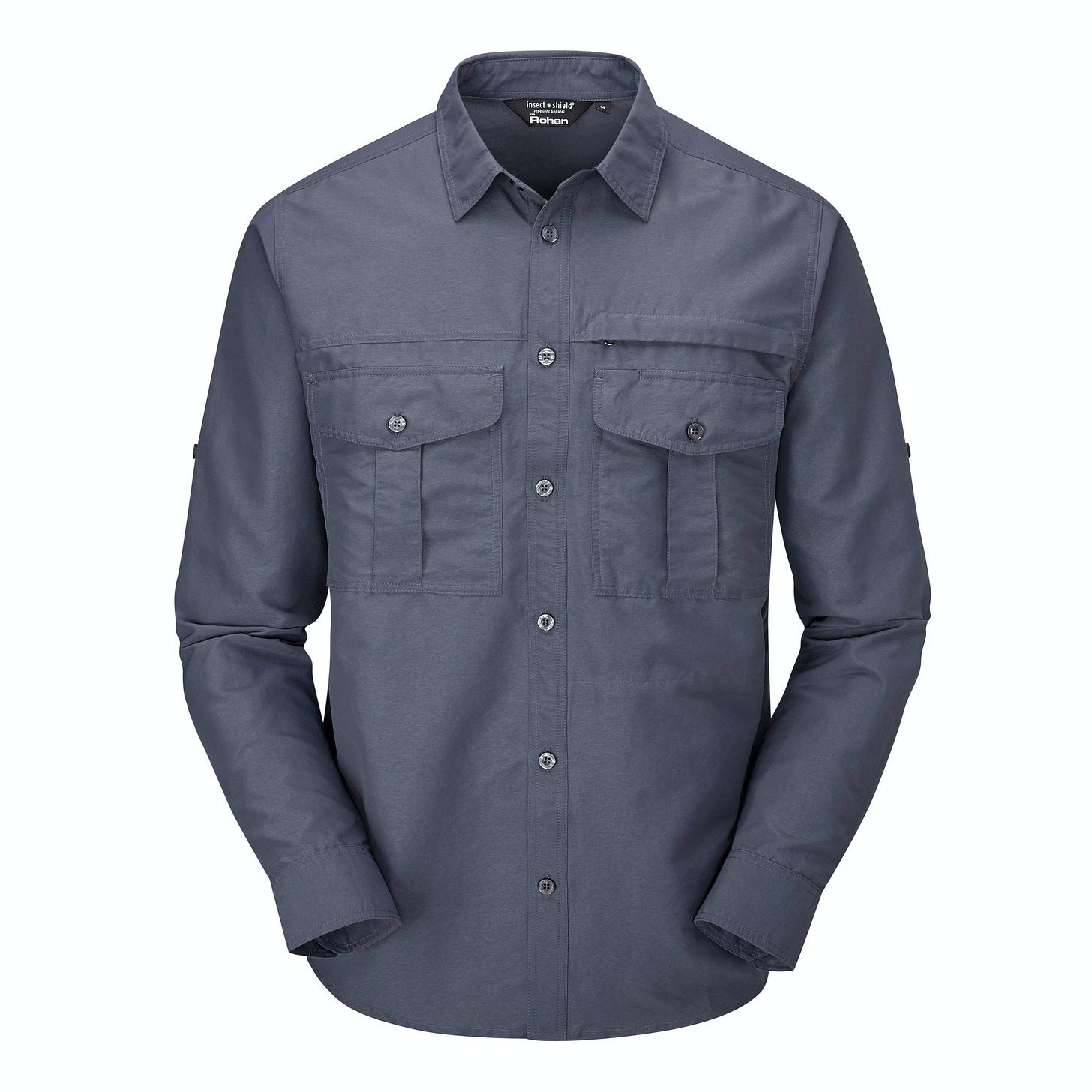The Shirt (part 1)
The second part of this series on performance outdoor clothing moves on from ubiquitous and casual t-shirt and looks instead at the smarter and less casual classic shirt, asking if it has a place in the outdoor wardrobe.
What is a shirt?
It's best to try and set some boundaries for what I'm writing about here, as the term 'shirt' is extremely broad, as I might class a rugby or lumberjack shirt as a shirt, but not necessarily a sweatshirt or Polo shirt. I suppose a shirt has to have the following qualities (of course, these are flexible and somewhat arbitrary):
Light to medium weight fabric.
Has some form of a collar.
Tailored rather than form-fitting.
Full-length sleeves that can be rolled up.
Uses some form of closure using a button or press studs.
In the context of this article, what I'm really interested are shirt designs/ideas that can be used in the outdoors as effective pieces of outdoor clothing.
A potted Shirt history
The modern shirt is a distant ancestor to the tunic, which began life as a simple all in one garment around 5000BC, allowing humans to do away with more problematical forms of clothing, such as animal skins, and constructed from an oblong piece of cloth made from felt, wool, flax, linen and later cotton.
This piece of material, whose width was probably defined by the width of the loom it was made from, would have a hole cut at its centre for the head (like a poncho) and would then be gathered in at the waist with a belt or rope (get a bed sheet and see what kind of outfit you could make without doing any sewing).
This created a garment that gave the wearer some protection for their modesty, as well as from the wind and sun, including the arms, but more importantly, it would set the wearer apart from lesser men, who would be naked, or close to naked (for much of ancient times it seems that trousers were scorned as being the clothing of barbarians).
The caste of the tunic owner would then be further defined by the length of the tunic (knee-length would be better for manual work), the colour (undyed cloth was cheaper, plus dyed cloth would often be defined by social rank or guild), and the quality of the material, with silk being reserved for only the very richest in society, but also cotton, which until 1730 was very labour intensive to produce (the cotton gin reversed that). These days the same rules apply, with the outdoor tribe split between those wearing Patagonia and Arc'teryx and those wearing Regatta and Trespass).
The shape and style and utility of the tunic was tweaked and refined over time, with the sides having more shape cut into them, and sewn together to form more of a fitted sleeveless tunic, with sleeves of all lengths (again, short sleeves are better for manual labour), sewn on, the length - like the length of a fashionable skirt - rising and falling in time and place.
In winter, a tunic would be made of wool, often with a linen tunic worn underneath in order to make it less itchy, with the tunic worn alone once the temperature rose. The winter tunic would also be bolstered by a cape of wool (or two woollen capes) or sheepskin. The very poor would wear tunics made from scraps of material, or the lowest quality of wool, which would have been gathered from the ground rather than cut from the sheep.
The tunic did not also protect the wearer from the elements and itchy outer garments, but also protected outer garments - which could be more valuable - from the wearer's sweat, which could damage clothing, but also reduced the need to launder as well (which could also break down a garment). Later, when the tunic evolved into the shirt, this role would be taken on by the singlet and t-shirt.
Eventually, people in the West began to adopt clothing that covered the legs, probably due to both a colder climate (they got over that barbarian thing), and fashion, adopting two pieces outfits, such as tights and breaches (these would be better in a world without roads or pavements), and later with trousers, meaning the tunic/shirt would be tucked in. In other parts of the world, the tunic would remain worn over the top of clothing, such as the classic Russian kosovorotka or the South Asian/Middle Eastern thawb and shalwar kameez (as an aside, the US military spent $5 billion to develop it's OCP (Operational Camouflage Pattern) uniform, while the Taliban equipped its men with the same clothing they used to defeat the British in 1842).
As the garment became more and more fitted to the user, which each tailored to fit in a pre-industrial world (it's remarkable how many tailors you'll find in the developing world still making up local clothing), I expect the need for buttons would become a vital component, appearing widely in the 13th century, but before that, a shirt would be closed with pins, ribbons of leather ties. I guess the length of the closer and the number of buttons was also perhaps dictated by the number of buttons and buttonholes one could afford.
Sleeves also became fitted and more shapely, ideally tapering down to a narrow wrist, no doubt also a sign of status, especially when combined with a little lace, a fabric that had no real value beyond the value it bestowed on the wearer. A clean cuff would also signal that you're not the kind of person who got their hands - or cuffs - dirty. The other advantage of a cuff, apart from being a good place to hide a blade, was that it could be opened with a button, allowing the user to "roll up their sleeves" to protect the material.
High wear areas such as the hem, cuffs and neck, and also the yoke (the area across the back), would be reinforced as these had to withstand the greatest wear, with seams also helping to both shape and provide strength (it's not that hard to rip a piece of cotton but try ripping a flat felled seam), the seam that runs down the back of a high-quality shirt a perfect example.
The collar, the most easily identified part of a shirt, came later, beginning at first as a collar proctor, designed to extend the life of a garment (again to reduce laundering), which became the ruff (think William Shakespear), and then a stiff collar of fabric, which was worn unfolded. The use of a removable collar also made it easier to starch the collar or change the collar (which would get dirty) rather than the whole shirt (important in the days of handwashing).
I suppose the most well-known shirt tale from this period was Charles I wearing two shirts during his execution in 1649 so as to avoid a chill that mist be mistaken as fear. As an aside, the use of two shirts, creating a layer of air between the two, of use in both hot and cold weather, has some followers, with Steve Bannon perhaps its most high profile - and controversial - proponent.
In terms of outdoor wear (although most workers not in factories worked outdoors, so the tunic/shirt was generally 'outdoors'), it's worth noting the introduction of the plaid flannel, or 'lumberjack' shirt in 1850. This very robust shirt matched build quality with wool, making it ideal for damp conditions and heavy work of North America and Canada, quickly becoming the uniform of the working man in North America, with Paul Bunion a 19th-century influencer, and later, in the 1990s, by Kurt Cobain, and the non-working man.
In Southern US and Central and South America ,the heavy-duty cotton shirt - or Western shirt - became part of the uniform for cowboys and cowgirls, an ideal item of clothing - when made from heavy-duty denim - that could handle the heaviest use while keeping the sun off your back.
One shirt that stands out in the early 19th and 20th century was the British army Greyback shirt, issued in 1860 and used from fighting the Zulus in Africa right through to the German's at Dunkirk. To my mind, this is a very early example of a piece of performance clothing - or clothing as equipment - in that the design was very user-focused, something often lacking in traditional military clothing (rigid and traditional and counterproductive to the goal of a fighting man).
The greyback shirt was made from a cotton flannel, which would be far more comfortable than wool, both against the skin and in hot weather, but with the flannel still making it a little warmer than plain cotton when damp. It featured a half-length button front, which meant there would be no seam or buttons to rub when worn under military webbing. The collar was done away with, with a plain cotton hem designed to provide some protection from the heavy wool tunic. The shirt was also cut long, so it stayed tucked in, being cut longer at the back for when bending over, with sleeves that could be rolled up in hot weather (important when you have an empire to defend). The last little interesting detail was a white strip was sewn just below the front buttons onto which your name could be sewn, so as to avoid someone stealing your shirt, as well as identify your body, I suppose (dog tags were only introduced during World War One).
Another step onto the path to modern shirt came in 1929 when Rene Lacoste (yes, the crocodile guy), a tennis pro, decided to replace his stiff collar with a soft and foldable design that the modern collar was born, with the function of a collar also coming into focus. Lacoste, playing outdoors, wanted a folding collar in order to give himself the option of protecting his neck from the sun.
Interestingly, ten years before the Lacoste shirt, Suzanne Lenglen – the first tennis diva – won Wimbledon wearing an outfit made from a cotton fabric called Airtex. Unlike a normal dense cotton weave, Airtex fabric was filled with holes, which meant it was both warmer than standard cotton in winter but also more comfortable in summer, making it ideal for the active user and sportsperson. This feature would be exploited both by the British and German armies in WW2, with the German's producing wool Airtex undergarments, while the British created a shirt and jacket (or 'shaket') for soldiers in both the Middle and the Far East far superior to standard cotton shirts. These items of clothing are again perhaps the precursors of modern technical outdoor clothing, as they had a huge amount of time, money and study/research put into them, producing items - such as the jungle shirt - far more advanced than anything on the market (more comfortable, tougher, and faster drying). After WW2, Airtex would go on to dominate the sports market, especially football, post WW2, with many modern items of sports clothing having evolved from Airtex.
World War 2 changed both the shirt and clothing in general, with mass production of all conceivable items of clothing and equipment creating what would become the modern industrial clothing complex. One day a factory is churning out hundreds of pairs of combat shirts for US soldiers, the next, Hawaiian shirts for a returning army to wear at the beach. This probably also spelt the doom of the use of the corner tailor, replacing them with mass production clothing based on small, medium and large (and now XXL and XXXL).
Army surplus shirts and other clothing became the unofficial uniform of climbers and mountaineers in the 50s and 60s, which was a little apt, as many items of army clothing were developed from mountain/polar clothing (the windproof smock, for example), being popular due both to its robustness and price, perhaps equipping young climbers with the kind of high-quality kit once only the preserve of the gentleman mountaineer.
This surplus clothing was to be slowly replaced by non-green workwear, such as the wool lumberjack shirt, which like all things American, was part of the post-world war love for all things American, although it wasn't all one way. In the 1970s, after a trip to Scotland, American's like Yvon Chouinard discovered the immensely tough rugby shirt, and so this iconic item crossed over the Atlantic and helped seed what would become Patagonia.
Over this period, there also grew up a lot of companies making very tough industrial shirts, designed for farming especially, some of which becoming dirtbag fashion gear (such as Carhartt), while others, such as RM Williams or Swanndri, would create their own tribes.
Polyester and nylon found themselves into shirts, but climbers and mountaineers and trekkers really didn't see anything that really gained traction until poly-cotton came along. Fabrics such as Airlight (1983) allowed shirts to be made that were both light and tough, fast-drying – so good in hot and sweaty and cold and damp - and in modern incantations, able to be made bug proof against mosquitos and ticks (vital in tropical environments). Nylon and polyamides also got in on the act, with safari, bush, travel and industrial (farming), shirts, slowly moving into the outdoor market, providing an alternative to the typical base layer ("the smelly Helly") or less effective cotton t-shirt. A study of the myriad of outdoor shirts and what they're made of (what it says on the swing ticket) would give you the impression that there are hundreds of wonder fabrics on the market, but generally, they're all either some variation of poly-cotton or polyamide and are less fabric tech and more marketing fluff.
These days almost all major brands have some form of 'trekking' shirt in their lineups, ranging from the budget end (but still very good), from companies like Craghoppers and 5.11 to the top, from Rohan, Patagonia and Arcteryx.
The fact they are classed as "trekking" shirts and tend to get overlooked by climbers and mountaineers is a shame, but in part two, I'll work through why the humble shirt might be worth a second look.







